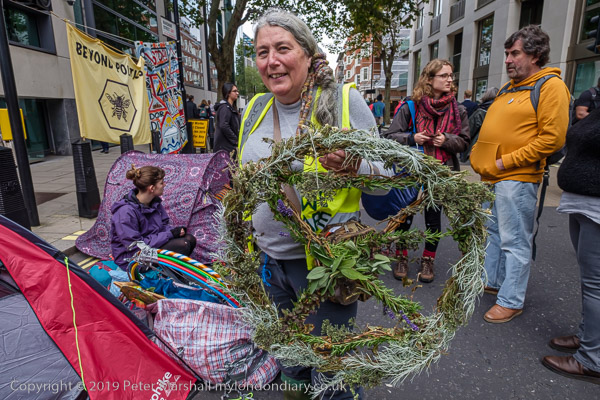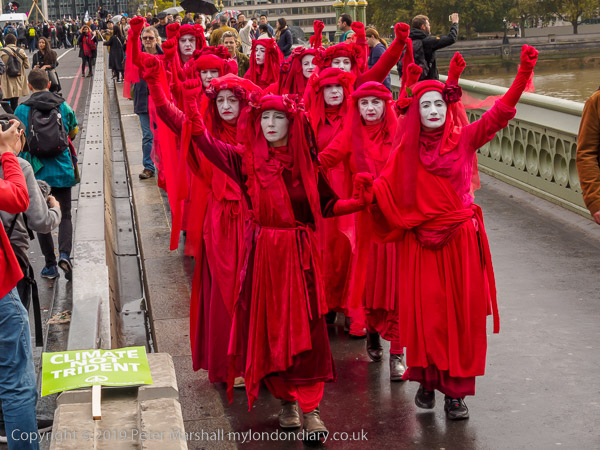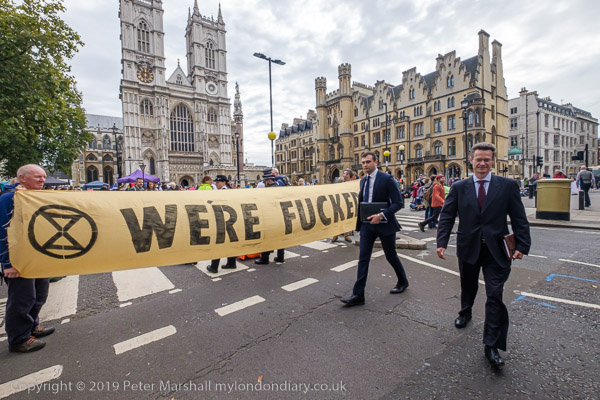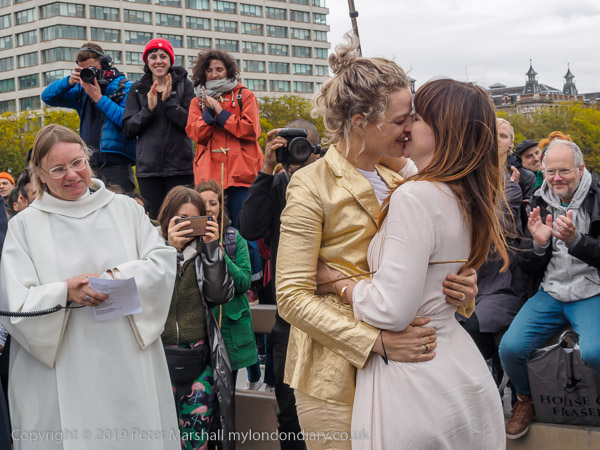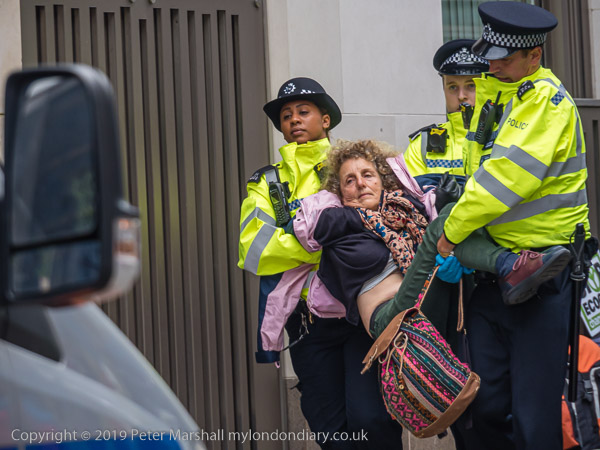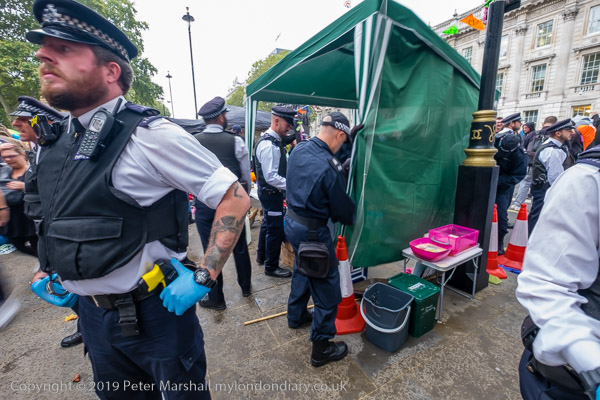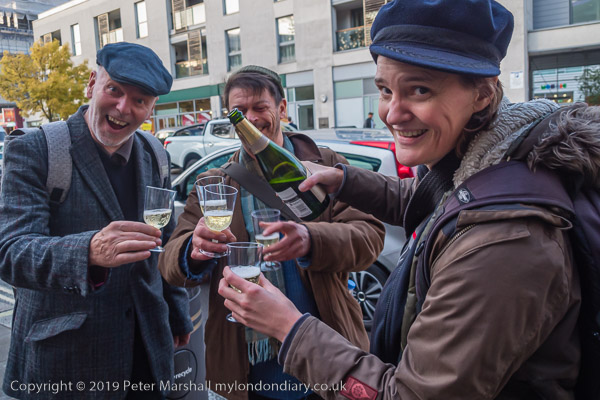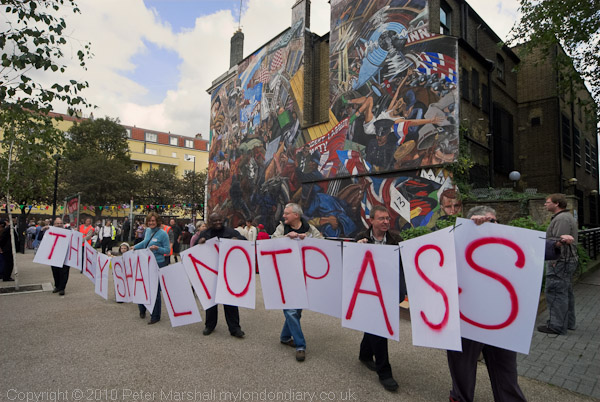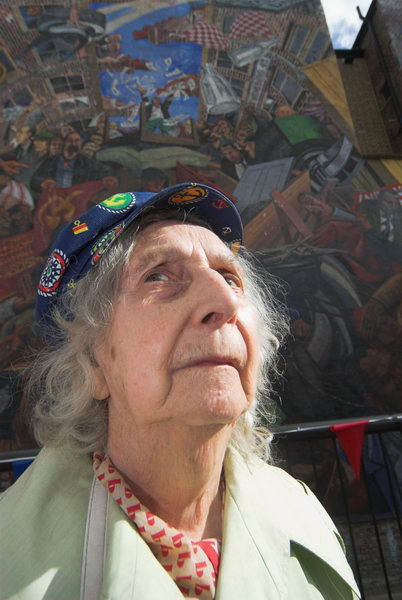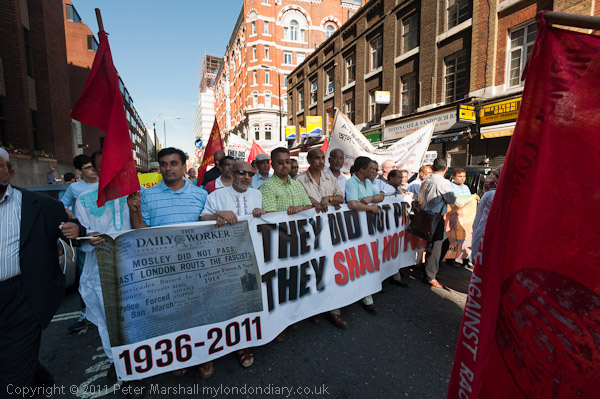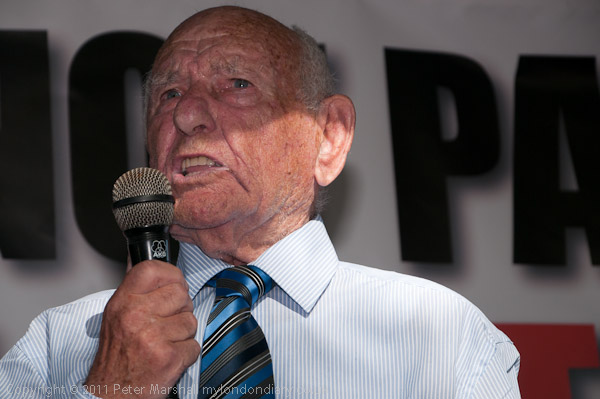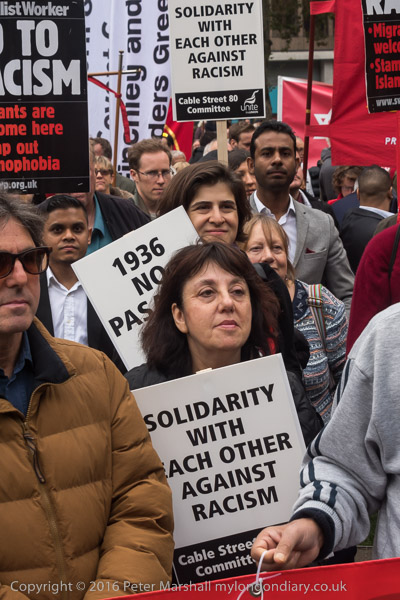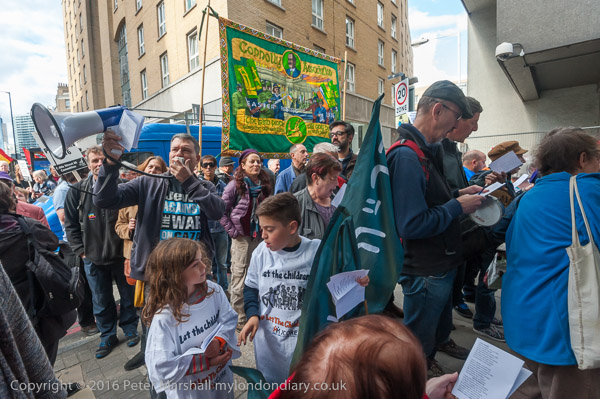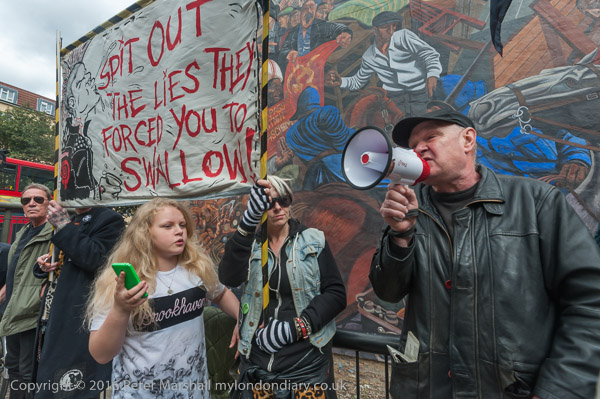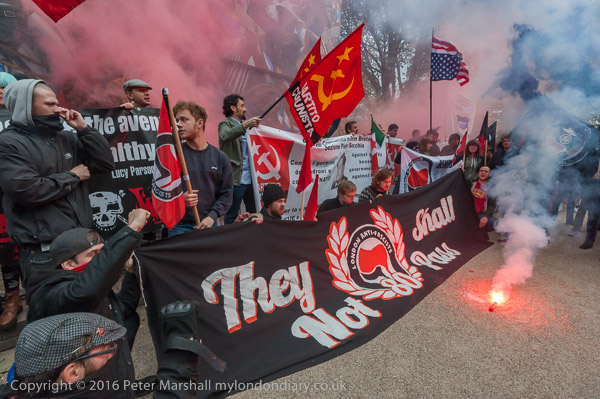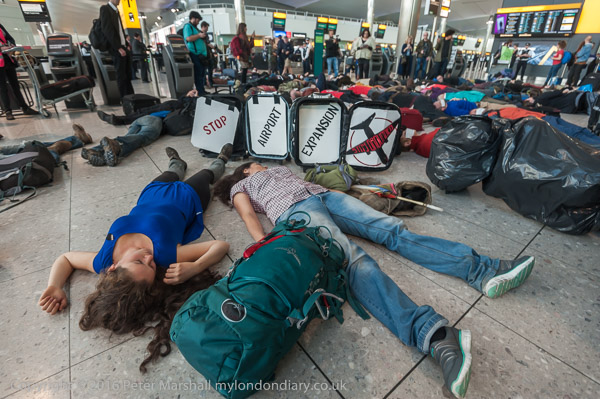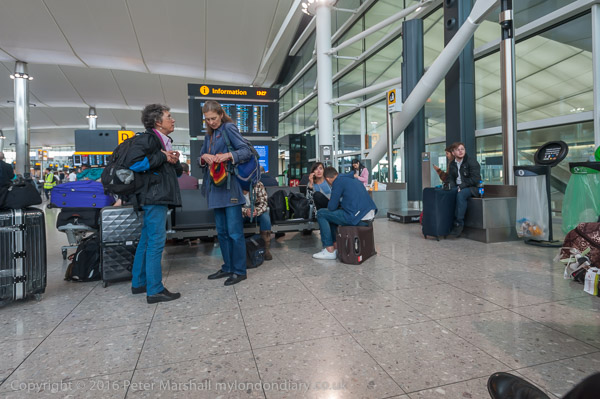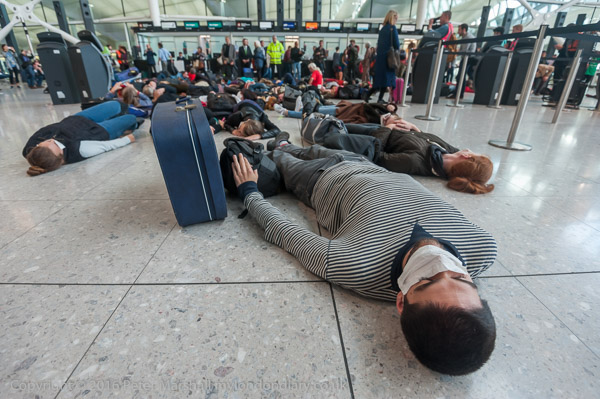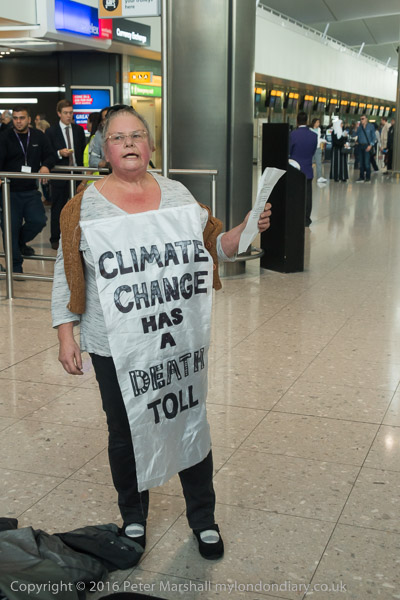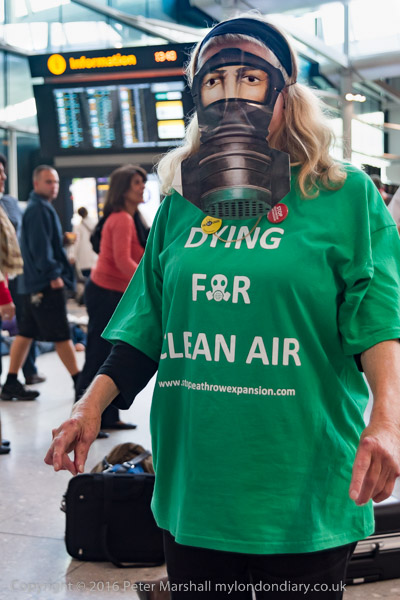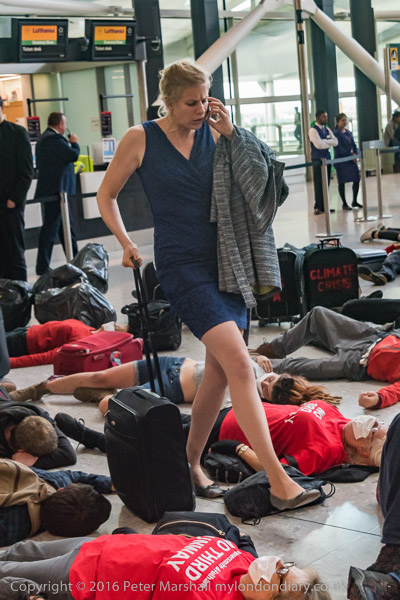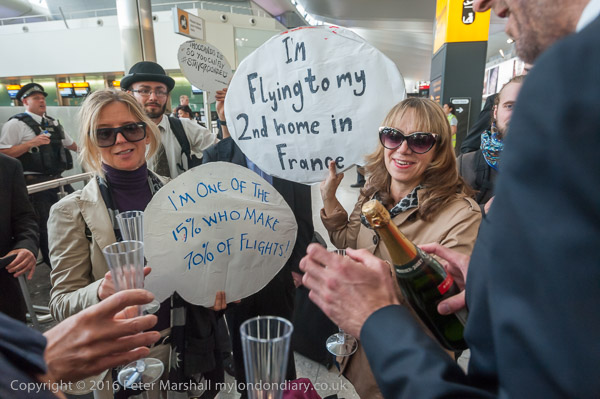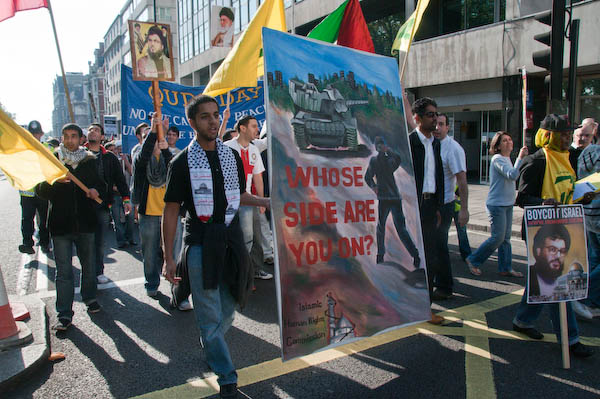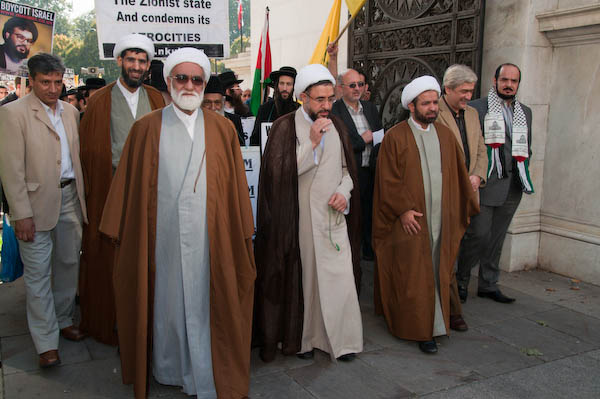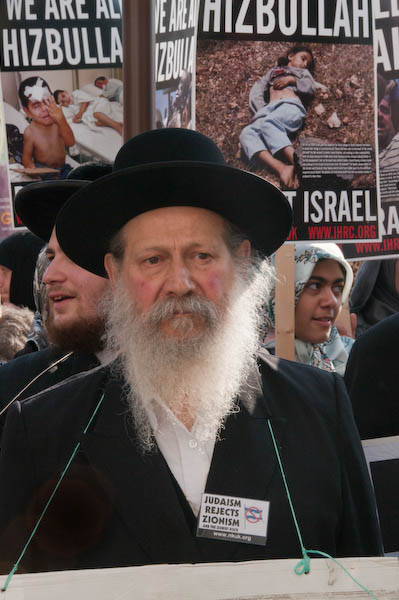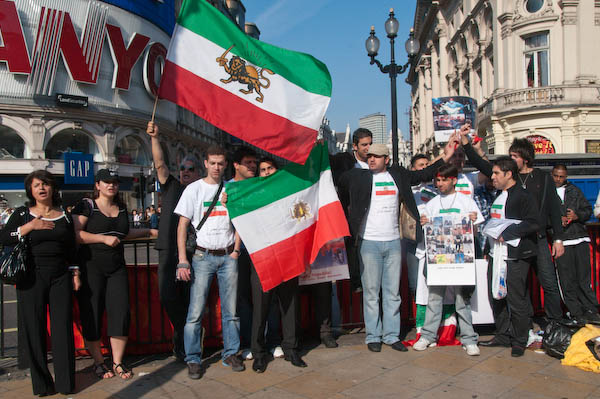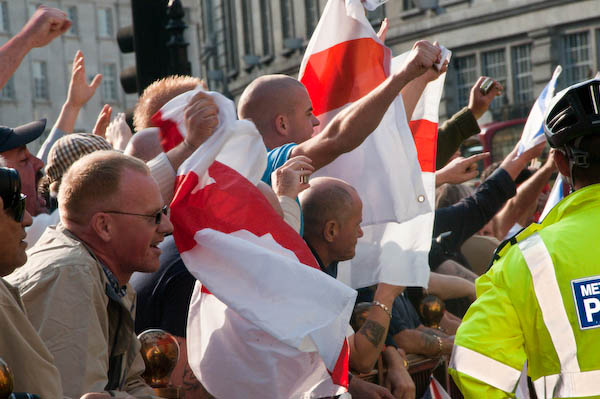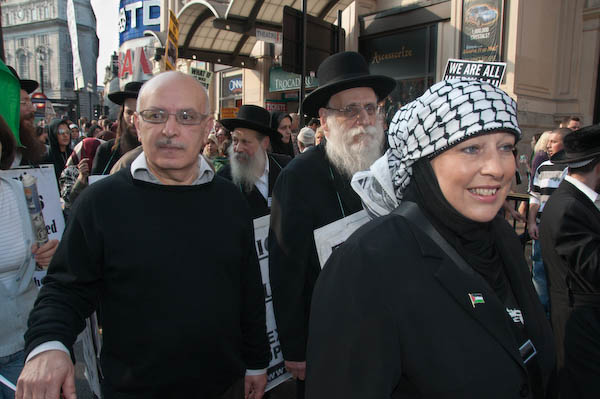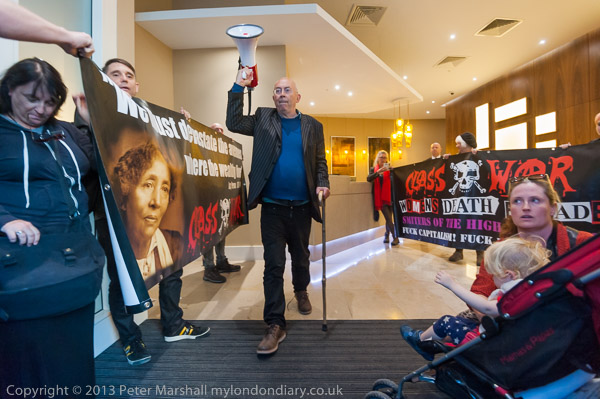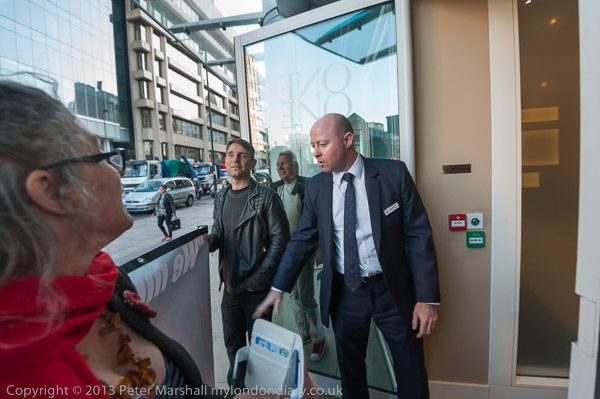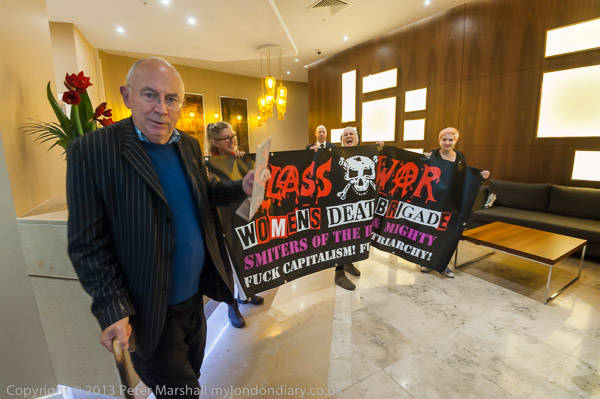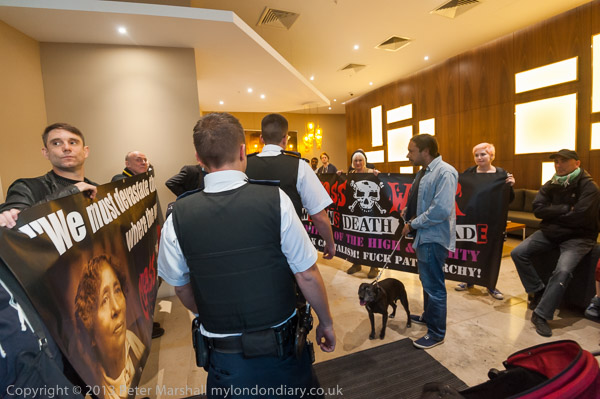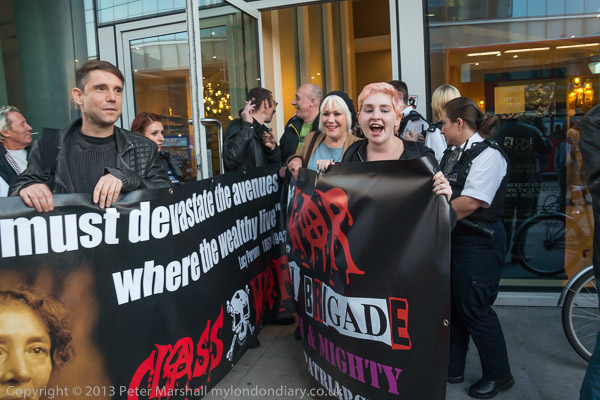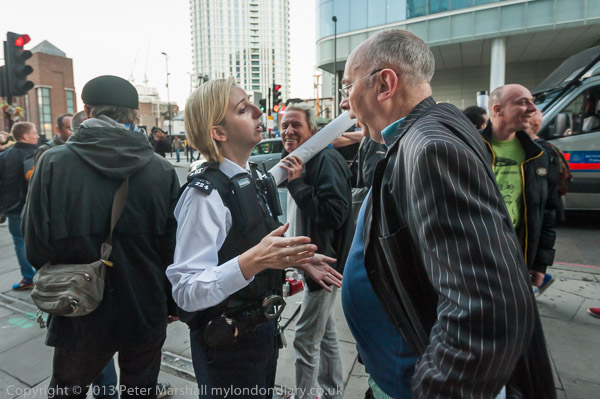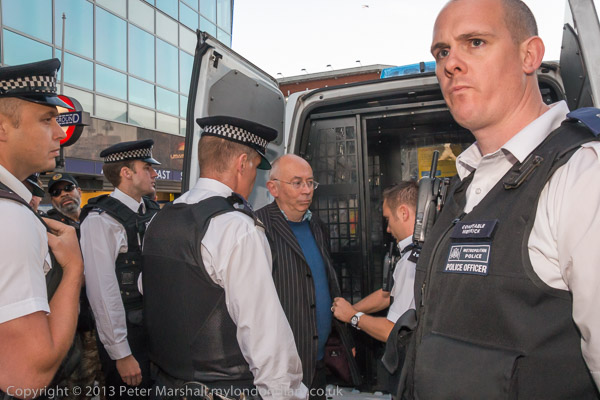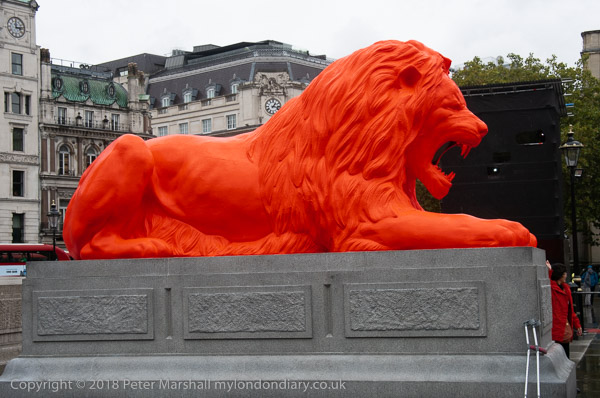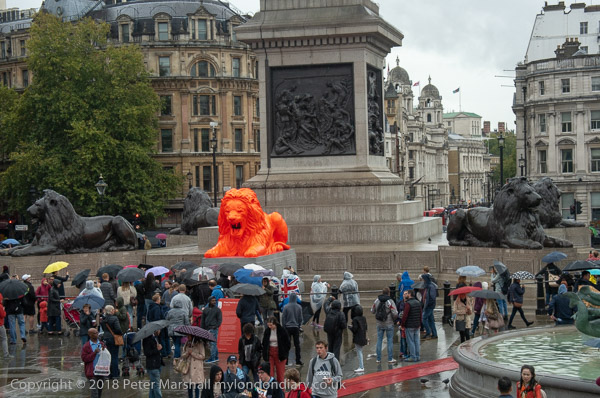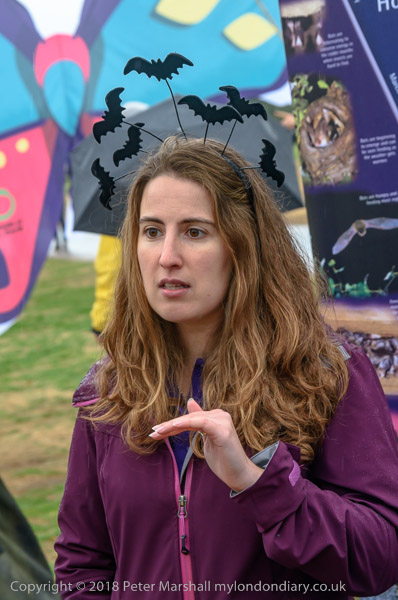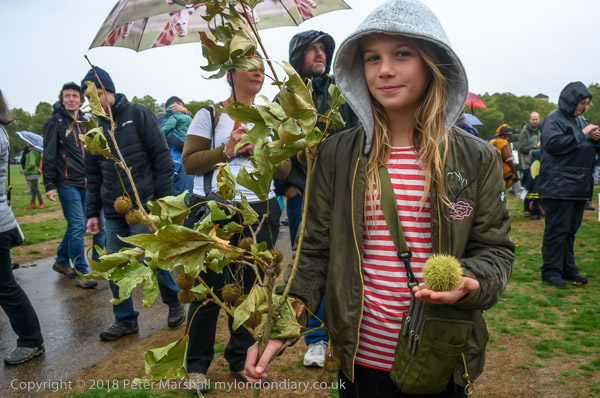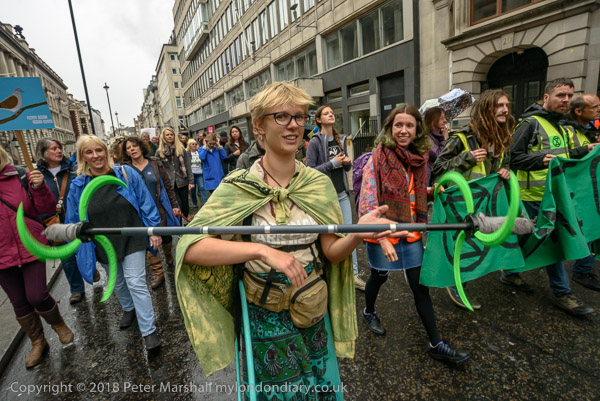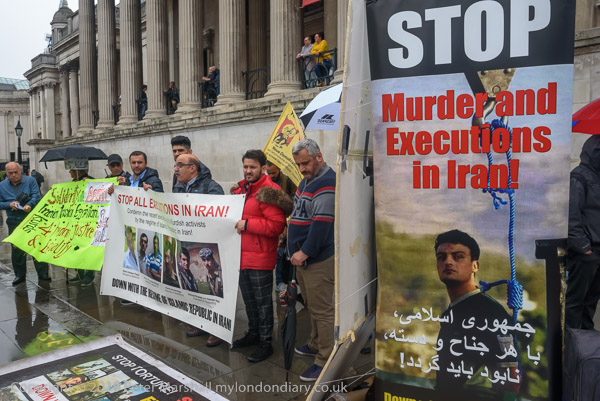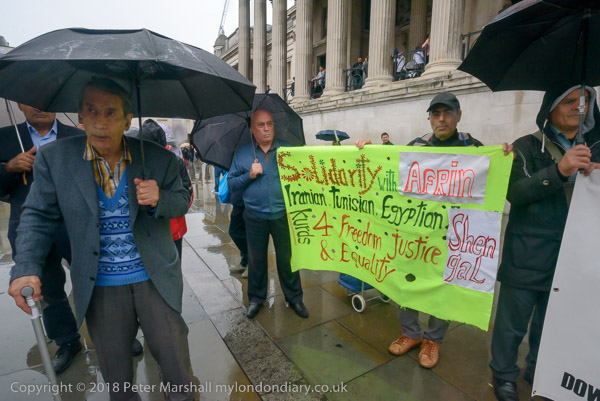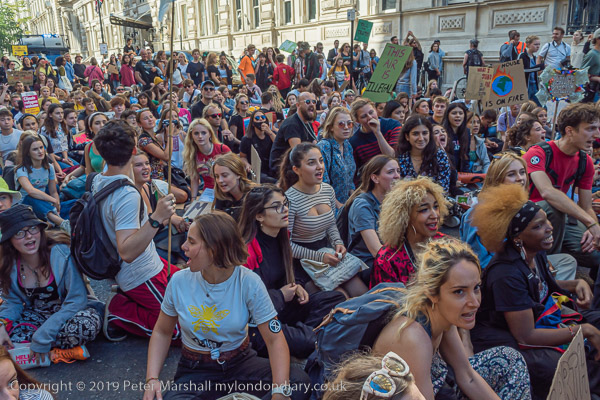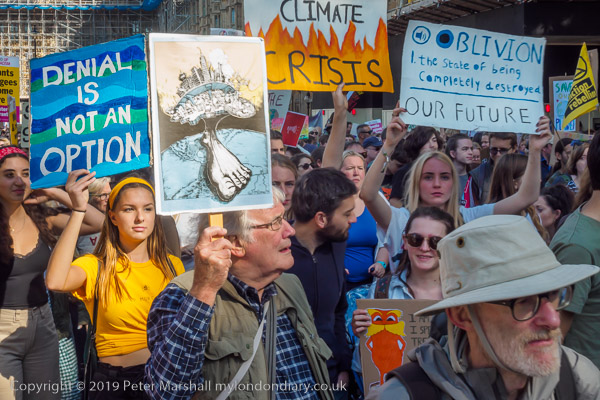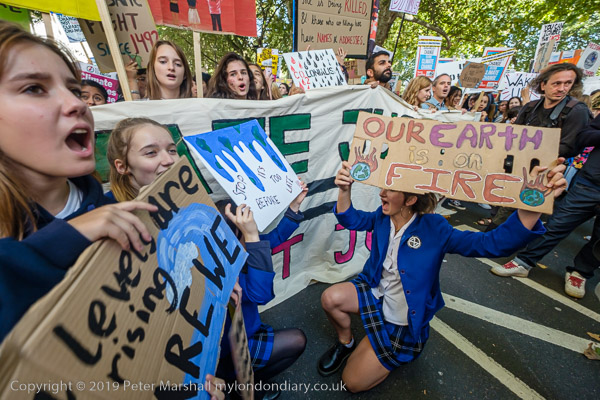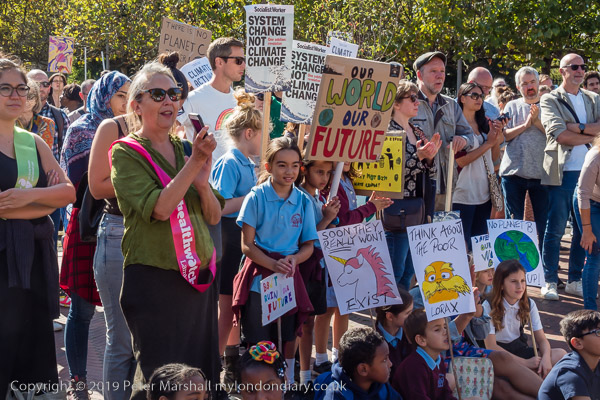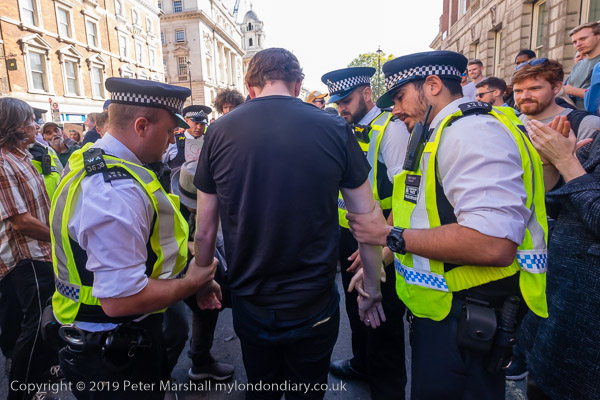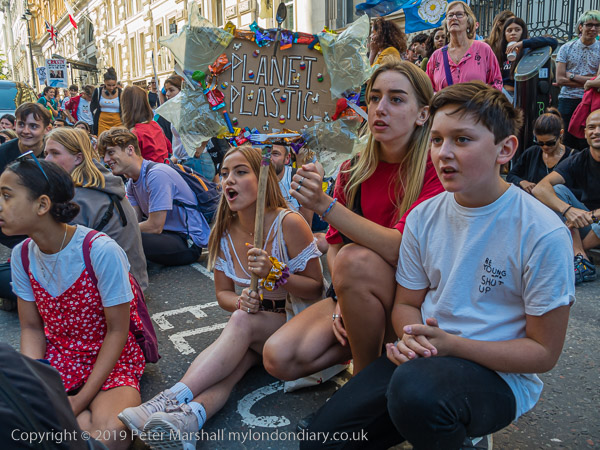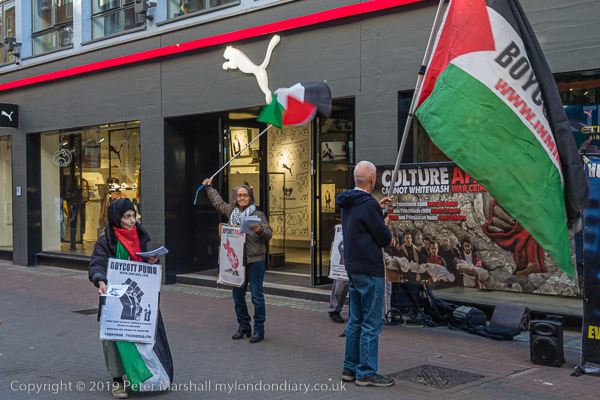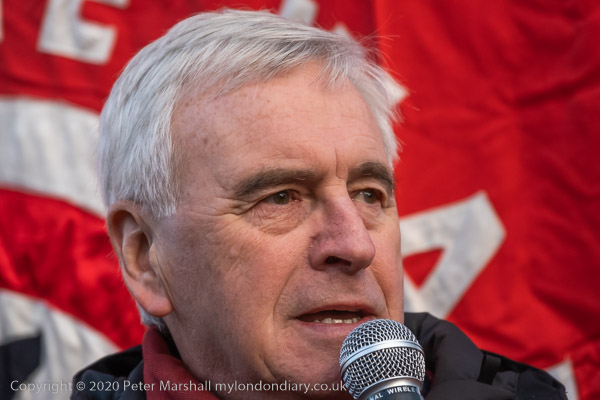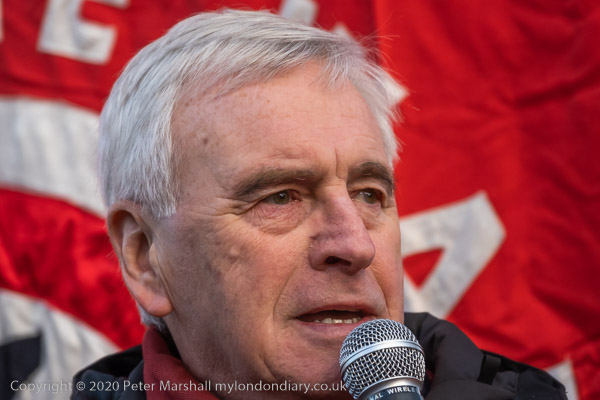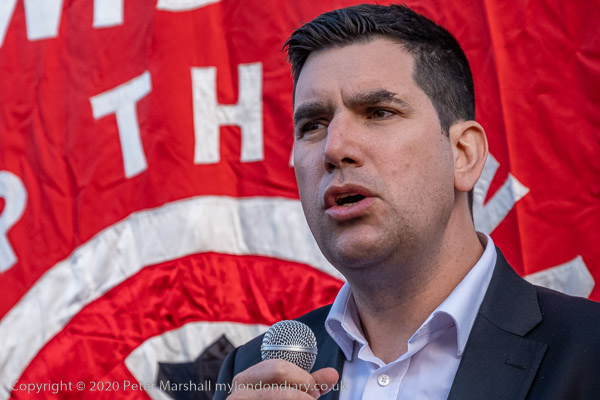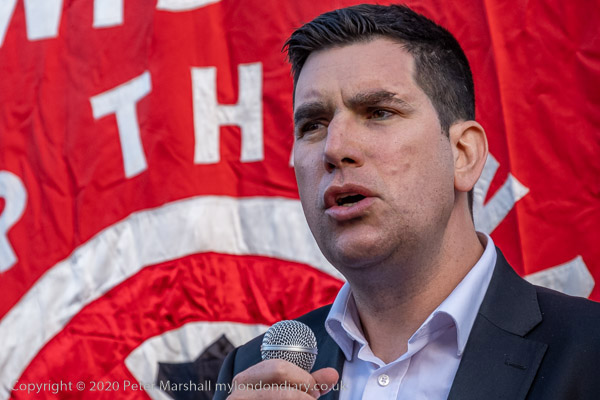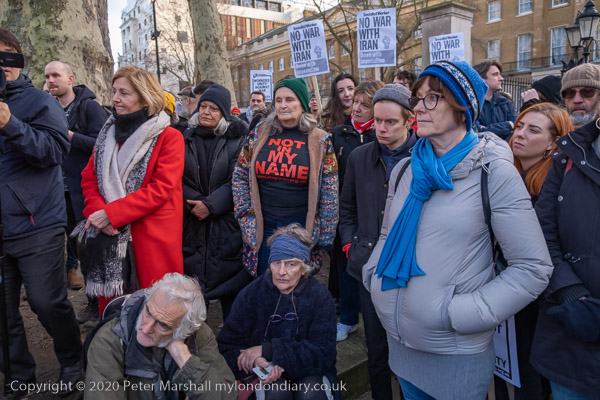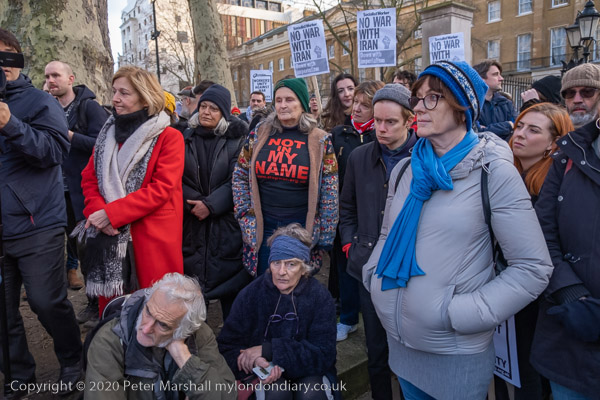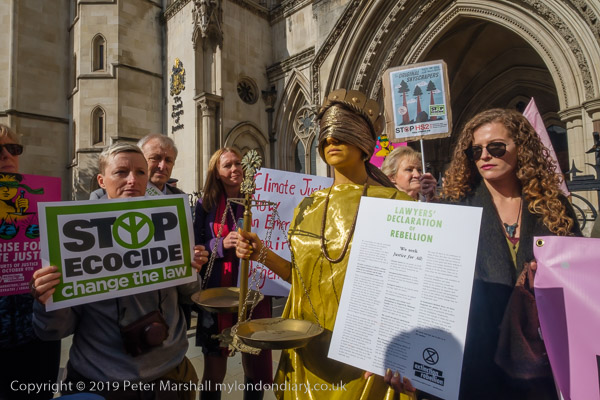
On 9th October 2019 I was with Extinction Rebellion outside the Royal Courts of Justice. Perhaps not surprisingly, this protest organised by Lawyers for XR had a rather different feel to most other XR events. The ‘All Rise for Climate Justice’ event stressed the need for a law against ecocide to protect the planet.
Rather a lot of people, many of them lawyers and including some distinguished name, were crammed into the relatively small area of pavement in front of the courts. This made it a difficult event to cover as it was hard to move around much without being obtrusive.
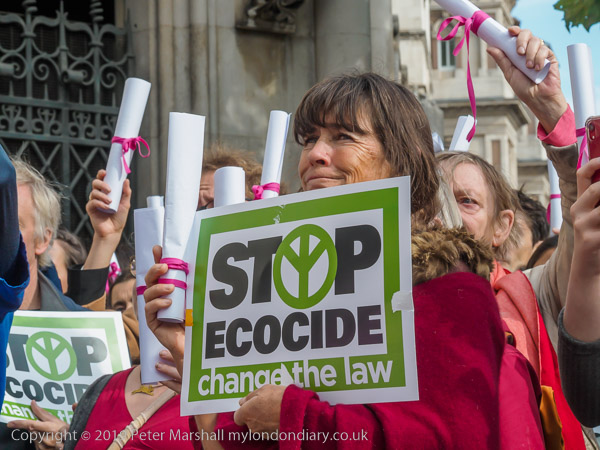
The event launched the ‘Lawyers Declaration of Rebellion’ and copies of it were handed out rolled up an tied with pink ribbon in the traditional manner used for the bundles of papers taken into court by defence barristers. Pink ribbons are now used to distinguish briefs from private citizens from those from the Crown which are tied with white ribbon.
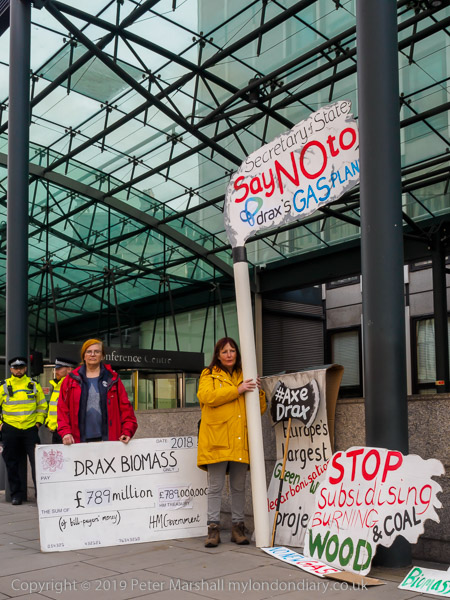
As the event at the Royal Courts of Justice ended I left quickly and rushed down to Victoria St where Axe Drax were protesting outside the Department for Business, Energy & Industrial Strategy (BEIS) calling for an end to the subsidies given to fossil fuels and biomass which produce climate destroying carbon dioxide. They called for the closure of Drax power station which burns wood pellets and coal, pointing out the absurdity of paying them £2 million a day in ‘renewable’ subsidies taken from our electricity bills as thepower station is the greatest single producer of carbon dioxide in the UK.
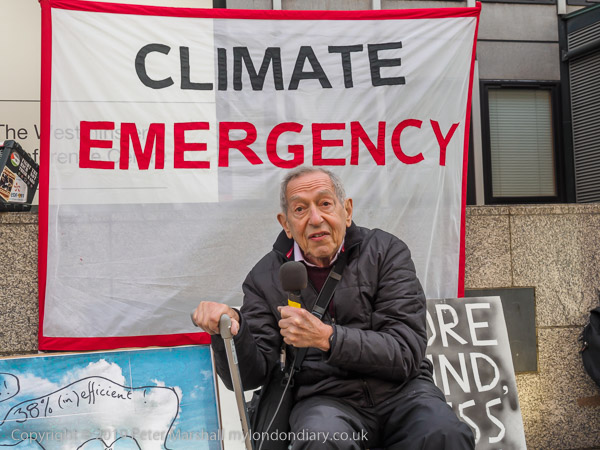
Usually I would have taken a bus for the journey, but the centre of London was still blocked to traffic and I had to walk – with a little running now and then – covering the mile and a half in 15 minutes. Even so I arrived halfway through the protest, but was pleased to be in time to hear Mayer Hillman, 88 year old Senior Fellow Emeritus at the Policy Studies Institute and a leading Green campaigner for many years speaking.
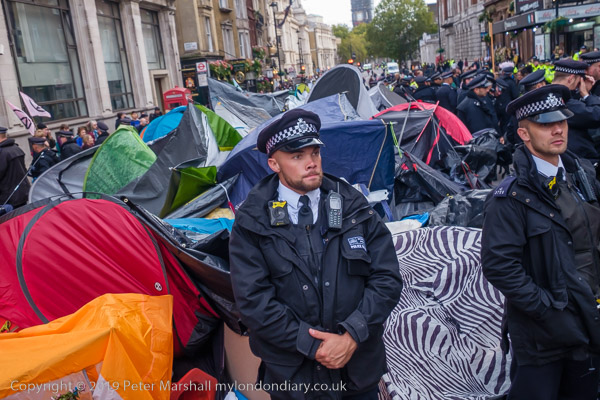
After that protest ended I walked around the other sites still occupied by XR. Although police were continuing to force them off some locations, trashing some tents and making more arrests, there was still no traffic in key locations and workshops and other events continued, with protesters still in fine spirits and something of a festival atmosphere. It isn’t every day that you get your beard pulled (gently) by a giant wallaby.
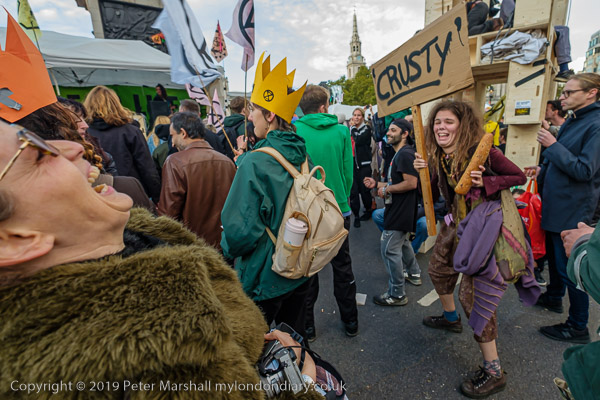
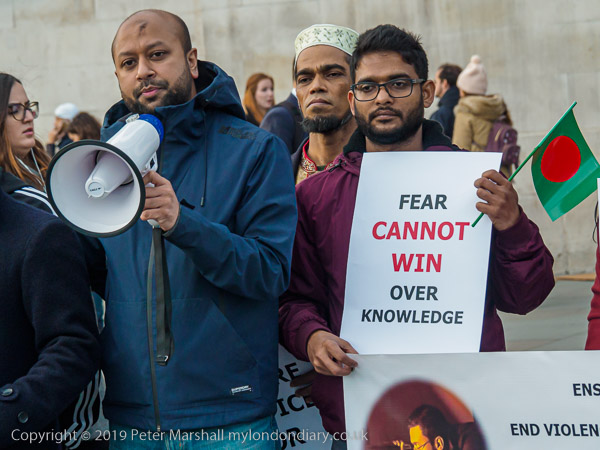
XR were not the only protesters in Trafalgar Square, and I was also able to cover a protest by Bangladeshi students demanding an end to violence on campus in Bangladesh universities after the beating to death of student Abrar Fahad by leaders of the Bangladesh Chhatra League, the student wing of Prime Minister Sheikh Hasina’s Awami League, at the Bangladesh University of Engineering and Technology on 7 Oct 2019.
It was another long day for me as I then went on to meet friends at the launch of Paul Trevor’s book ‘Once Upon a Time in Brick Lane‘, before wandering down Brick Lane and taking a few photographs on my way to the tube. It was around 2am before I finished processing and filing my pictures for the day, and I needed to take the next day off to have a rest.
Many more pictures on My London Diary:
Brick Lane Night
Bangladeshi students protest campus violence
Extinction Rebellion Day 3
Biofuel Watch – Axe Drax at BEIS
All Rise For Climate Justice
All photographs on this and my other sites, unless otherwise stated, are taken by and copyright of Peter Marshall, and are available for reproduction or can be bought as prints.
